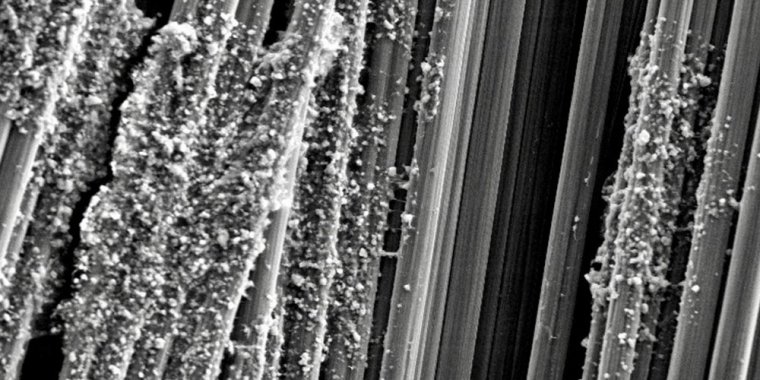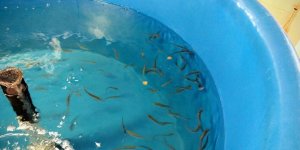| News / Science News |
Nanocrystals from waste of recycled wood make carbon-fiber composites tougher
In current technology, polymers reinforced with ultra-fine strands of carbon fibers represent a class of composite materials that are "as light as a feather and as strong as steel," leading to versatile applications in several industries. To increase strength and give carbon-fiber composites other desirable properties such as high electrical and thermal conductivities, carbon nanotubes are often added.

Electron micrograph of cellular nanocrystals on the carbon fibers. Photo: Amir Asadi
However, the chemical processes used for incorporating the carbon nanotubes into these composites often cause the nanotubes to spread unevenly and clump, reducing the overall benefit.
To facilitate the even distribution of carbon nanotubes, researchers in a study at Texas A&M University used natural plant products called cellulose nanocrystals to coat and pin carbon nanotubes uniformly into the carbon-fiber composites.
The researchers said their method is quicker than conventional methods and allows for the designing of novel carbon-fiber composites.
"The incorporation of cellulose nanocrystals into carbon nanotube/carbon fiber polymer composites creates a lightweight but tough material with potential applications in the aerospace, automotive, marine and defense industries," says Khershed Cooper, a program director in NSF's Directorate for Engineering. "The use of recycled wood waste to extract cellulose nanocrystals makes it an environmentally benign process."
Composites are built-in layers. For example, polymer composites are made of layers of fiber, such as carbon fiber or Kevlar, and a polymer matrix. This layered structure is the source of the composites' weakness. Any damage to the layers causes fracture, a process technically known as delamination.
To facilitate the even distribution of carbon nanotubes, the team turned to cellulose nanocrystals, compounds easily obtained from recycled wood pulp.
The researchers found that the unique molecular structure offers the ideal solution to construct composites at the nanoscale. (National Science Foundation)
YOU MAY ALSO LIKE





